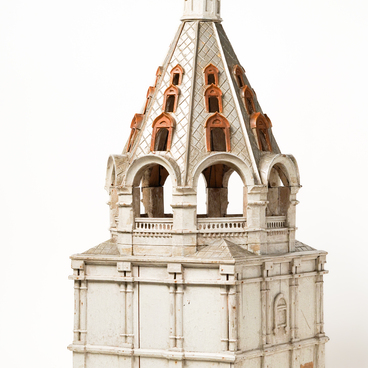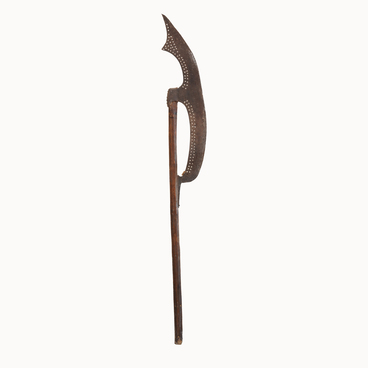The first firearms (tyufyaks and cannons) appeared in Russia at the end of the 14th century. Historians of pre-revolutionary Russia determined the exact year when this happened thanks to the Tver chronicle which dated it to 1389:
Cannon
Время создания
the late 16th – early 17th century
Место создания
Western Europe
Размер
20x62 cm
Техника
casting, cast iron
Коллекция
#3
#7
The same summer the cannons were taken from the Germans.
#6
In 1408, Emir Edigey who besieged Moscow, knew that Tver had first class artillery, and sent Tsarevich Bulat for it. Only the outright sabotage of Tver prince Ivan Mikhailovich, who was extremely slow in preparing the artillery for the campaign, forced Edigey to take money as ransom.
The first Russian guns were made of iron. They were forged from 7–10 mm thick metal strips of, bent to shape a barrel and welded. The next bent sheet of iron was put on the barrel and welded again. Then the procedure was repeated. Forged guns were in service of the Russian army throughout the 15th century. The first tyufyaks, cannons and arquebuses had no sighting devices, but after a short time the need to correct the shooting resulted in developing the simplest sights — front sights and notches, and then the tubular and frame sights. To adjust the angle of elevation of the gun in an oak block, a system of wedge-shaped inserts was used to raise the cannon barrel to the necessary height.
A new stage in the development of Russian artillery came when copper cannons began to be cast. The introduction of the new technology improved the quality of the artillery and allowed the transition to the production of large-caliber cannons and mortars. Cast guns were more expensive, but they shot farther and more accurately than forged ones.
The Local History Museum displays a small cannon of the 17th century, made of cast-iron in Western Europe — a falconet (from “falcon”). In Russia they were called “volkoneya”. They were cannons of small caliber, designed for firing a whole cannon ball at flat (low) trajectory against a small field fortification and enemy’s manpower. They were used both in the field and for defending fortresses. This gun is very small: its length is only 59 cm and its caliber is 40 mm. There are two trunnions (handles for attaching it to the carriage) on the sides of the barrel. At the beginning of the 17th century, Kolomna was the place where Polish-Lithuanian invaders and Russian traitors’ armies passed through and stayed during the Time of Troubles. This cannon is undoubtedly a monument to the heroic days of the struggle against the invaders at the beginning of the 17th century.
The first Russian guns were made of iron. They were forged from 7–10 mm thick metal strips of, bent to shape a barrel and welded. The next bent sheet of iron was put on the barrel and welded again. Then the procedure was repeated. Forged guns were in service of the Russian army throughout the 15th century. The first tyufyaks, cannons and arquebuses had no sighting devices, but after a short time the need to correct the shooting resulted in developing the simplest sights — front sights and notches, and then the tubular and frame sights. To adjust the angle of elevation of the gun in an oak block, a system of wedge-shaped inserts was used to raise the cannon barrel to the necessary height.
A new stage in the development of Russian artillery came when copper cannons began to be cast. The introduction of the new technology improved the quality of the artillery and allowed the transition to the production of large-caliber cannons and mortars. Cast guns were more expensive, but they shot farther and more accurately than forged ones.
The Local History Museum displays a small cannon of the 17th century, made of cast-iron in Western Europe — a falconet (from “falcon”). In Russia they were called “volkoneya”. They were cannons of small caliber, designed for firing a whole cannon ball at flat (low) trajectory against a small field fortification and enemy’s manpower. They were used both in the field and for defending fortresses. This gun is very small: its length is only 59 cm and its caliber is 40 mm. There are two trunnions (handles for attaching it to the carriage) on the sides of the barrel. At the beginning of the 17th century, Kolomna was the place where Polish-Lithuanian invaders and Russian traitors’ armies passed through and stayed during the Time of Troubles. This cannon is undoubtedly a monument to the heroic days of the struggle against the invaders at the beginning of the 17th century.
#8
Cannon
#5
Ministry of Culture of the Russian Federation
читать дальшескрыть
00:00
00:00
1x
Cannon
Время создания
the late 16th – early 17th century
Место создания
Western Europe
Размер
20x62 cm
Техника
casting, cast iron
Коллекция
Открыть в приложении
Поделиться






